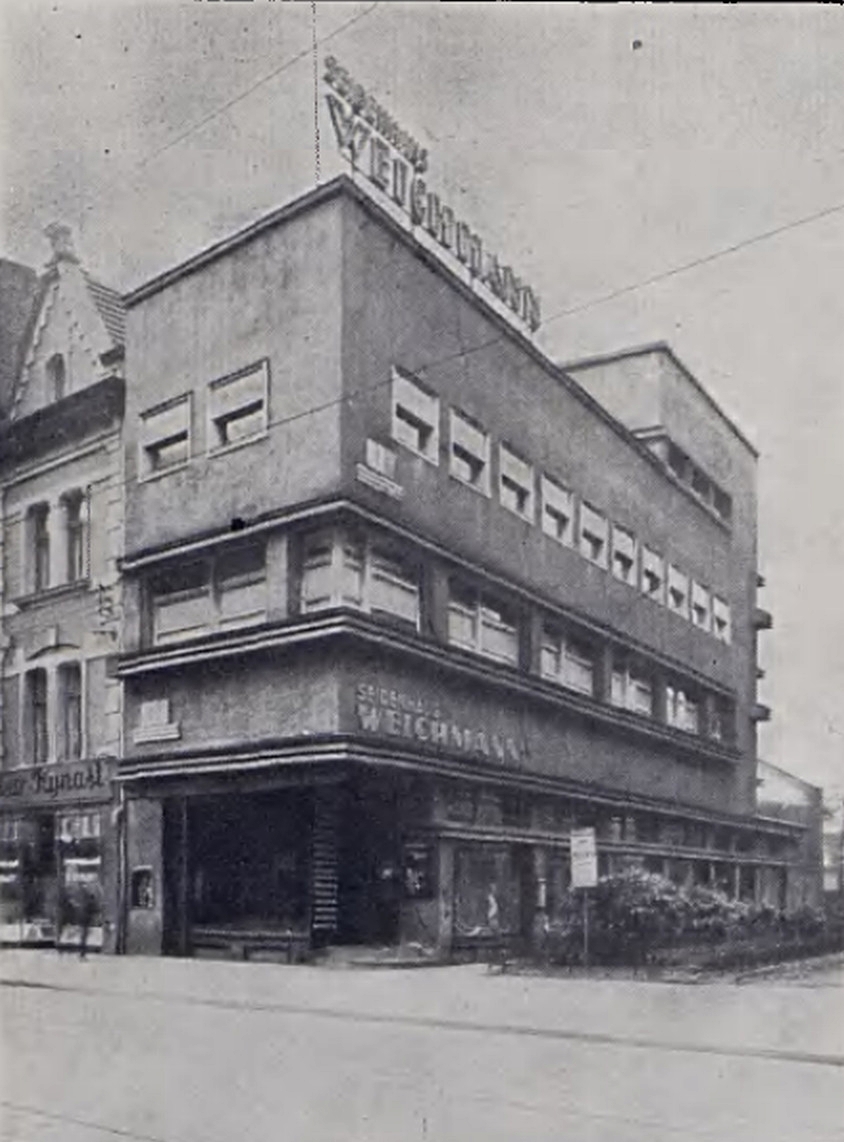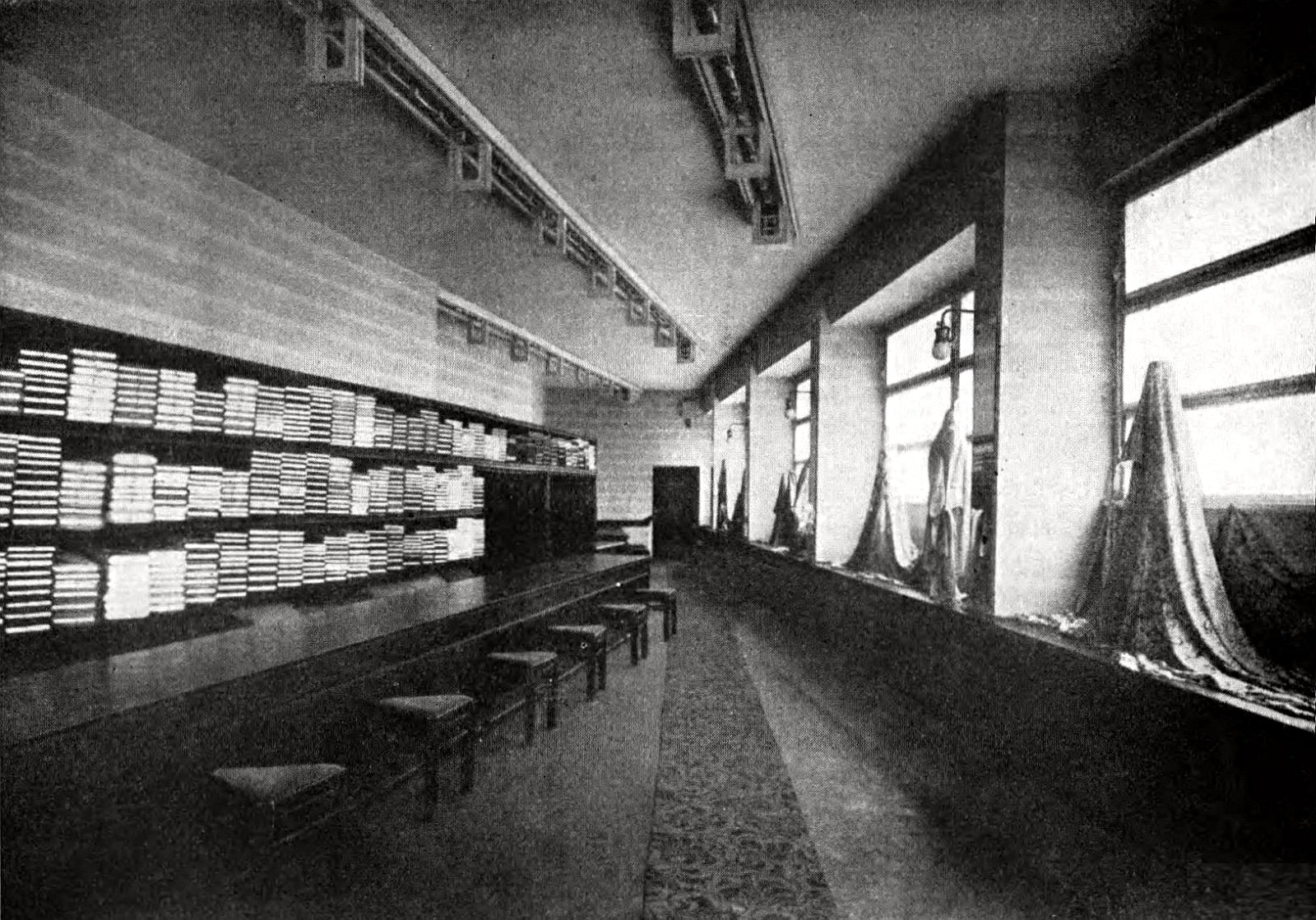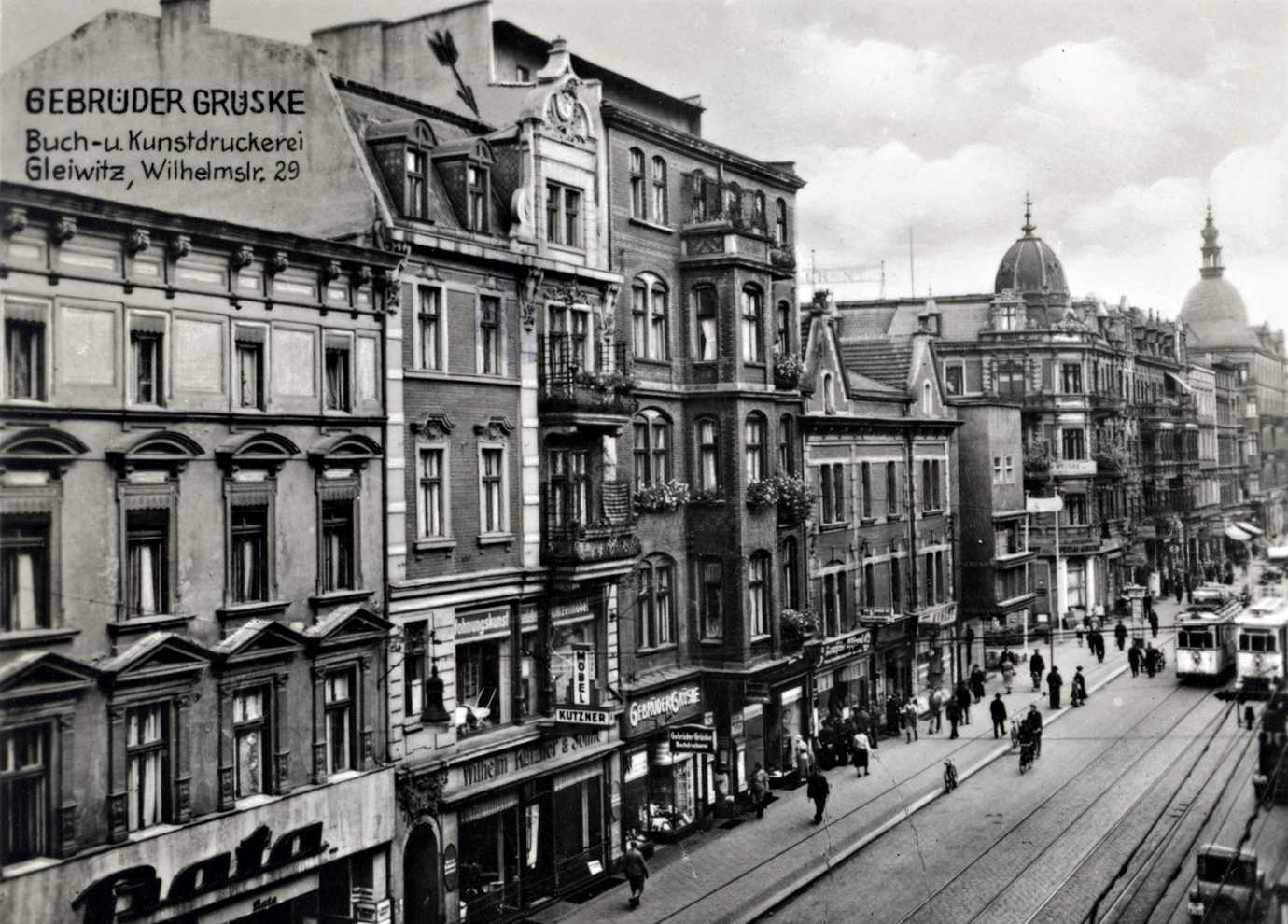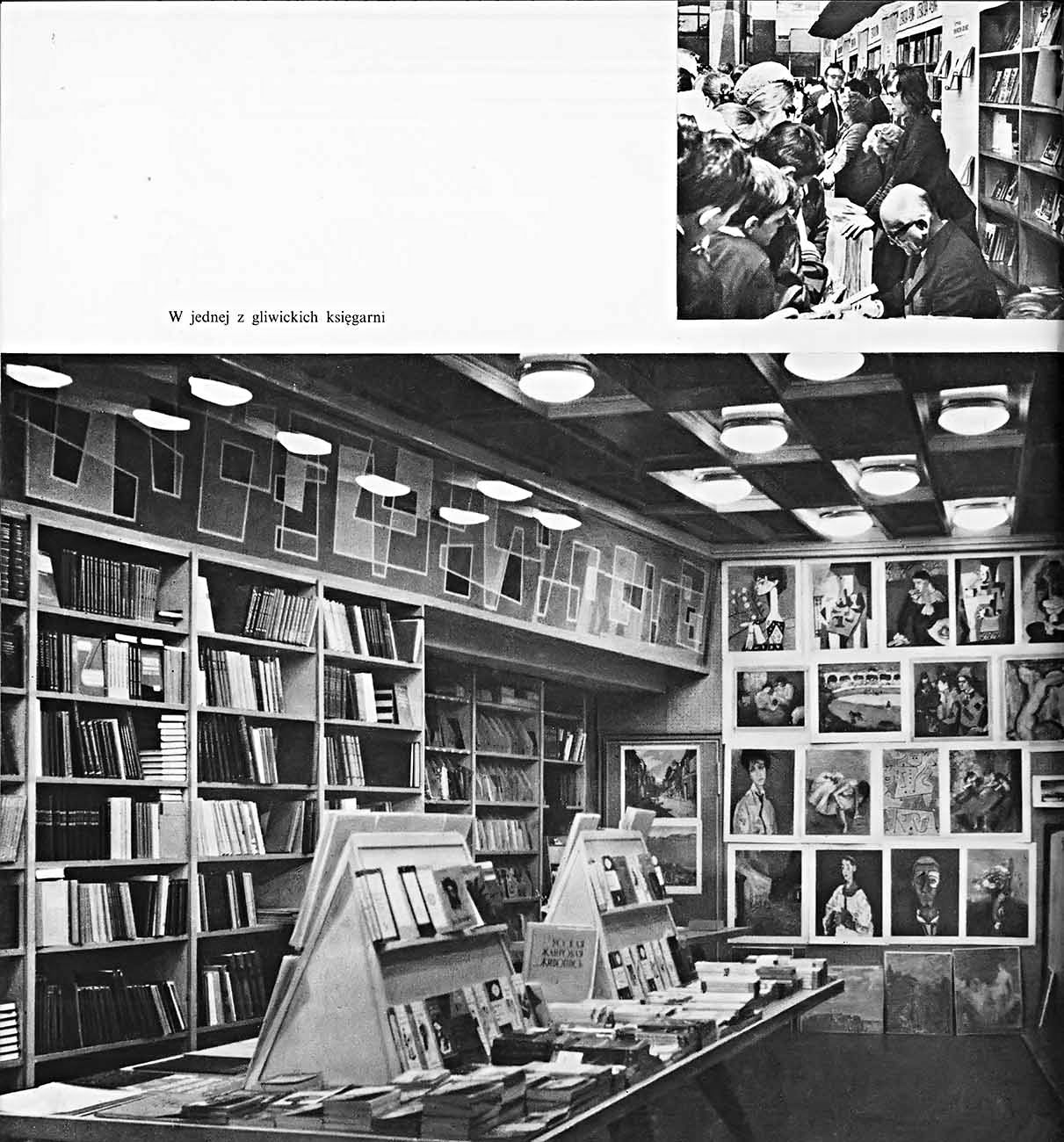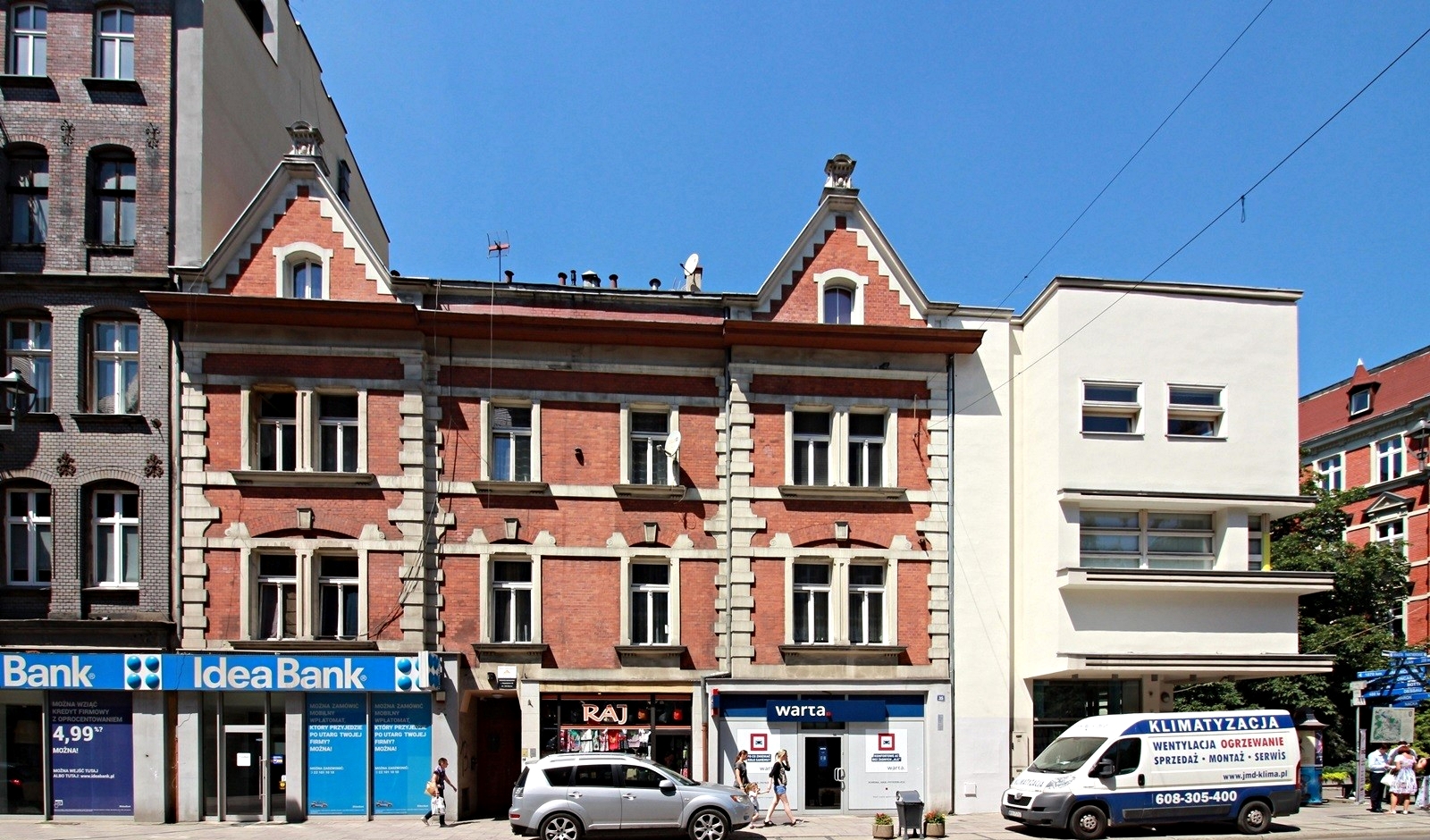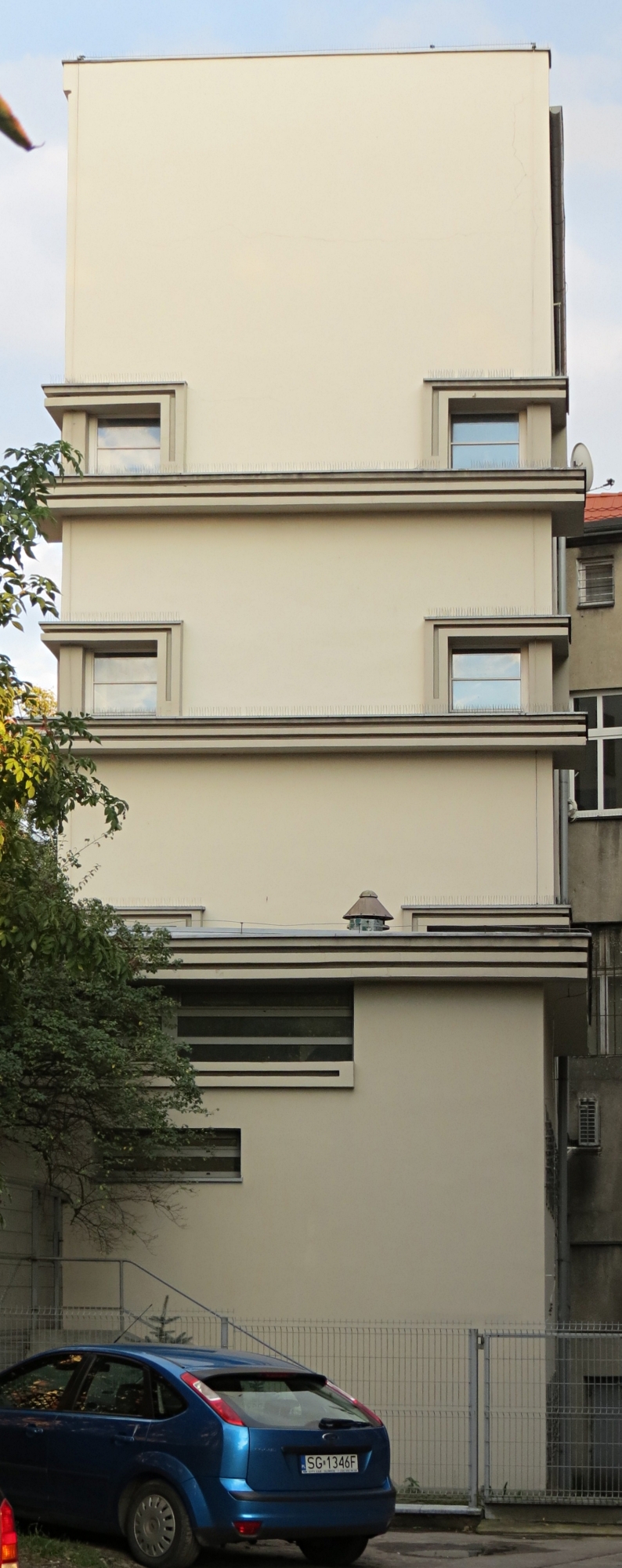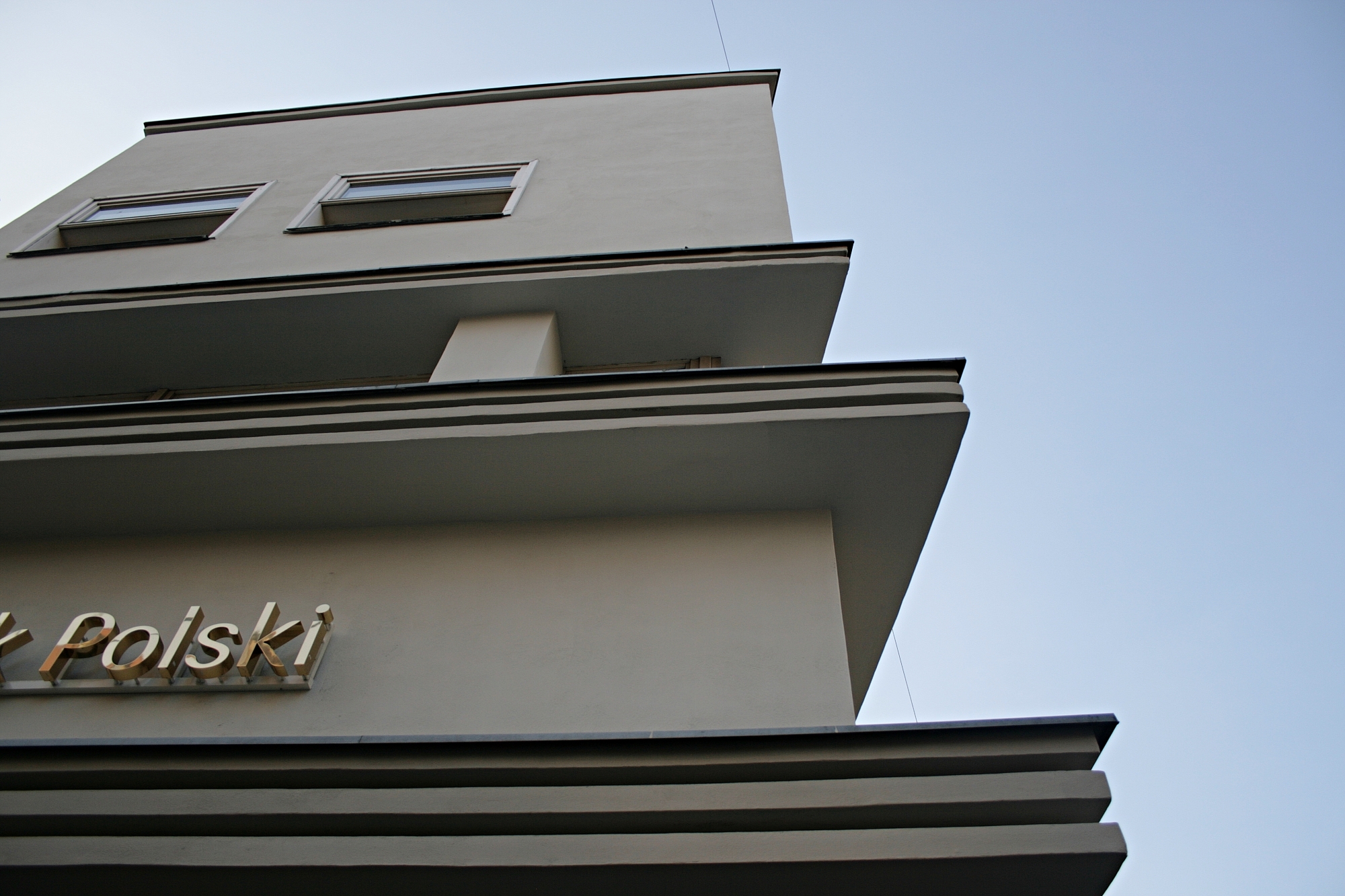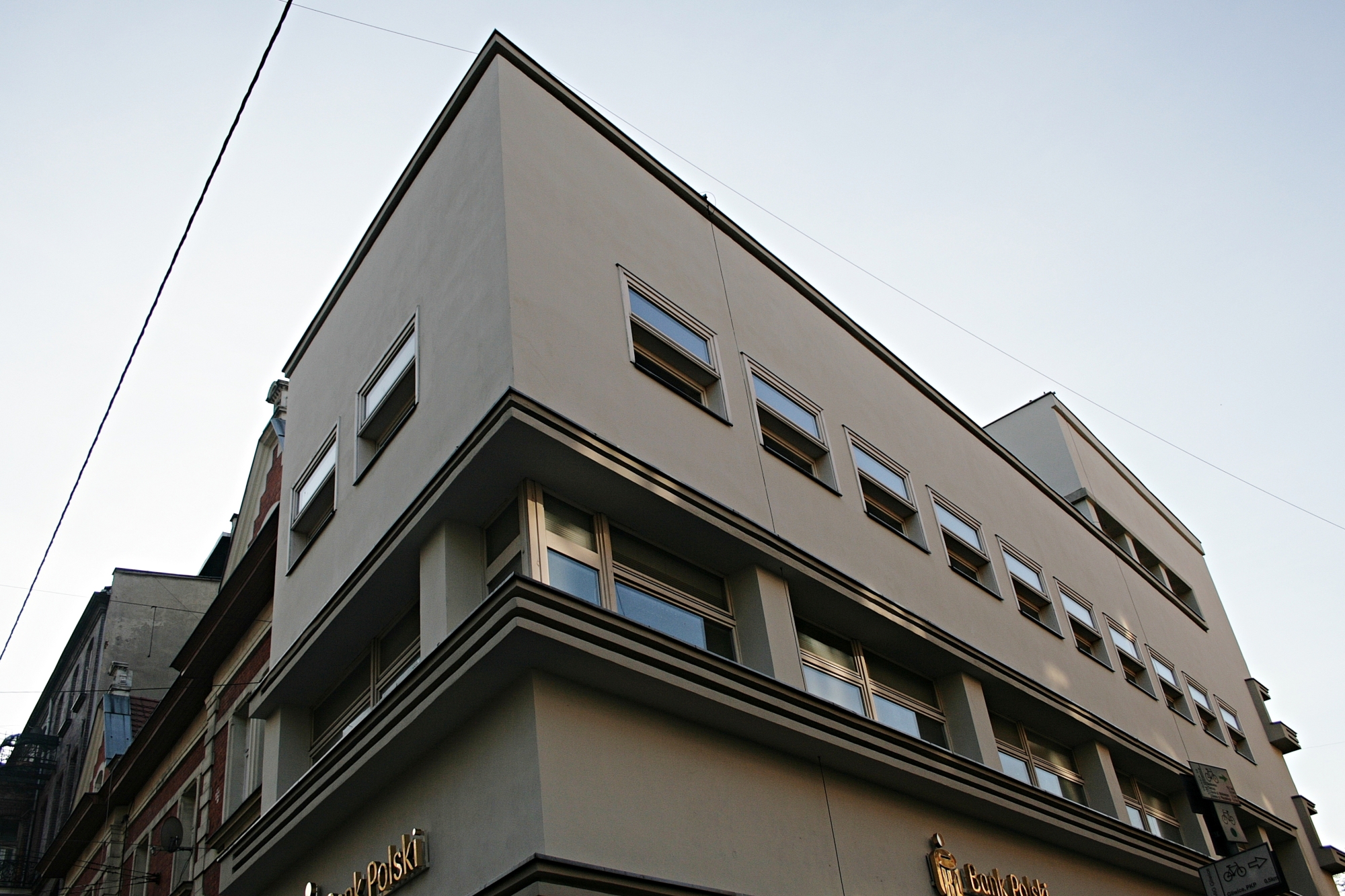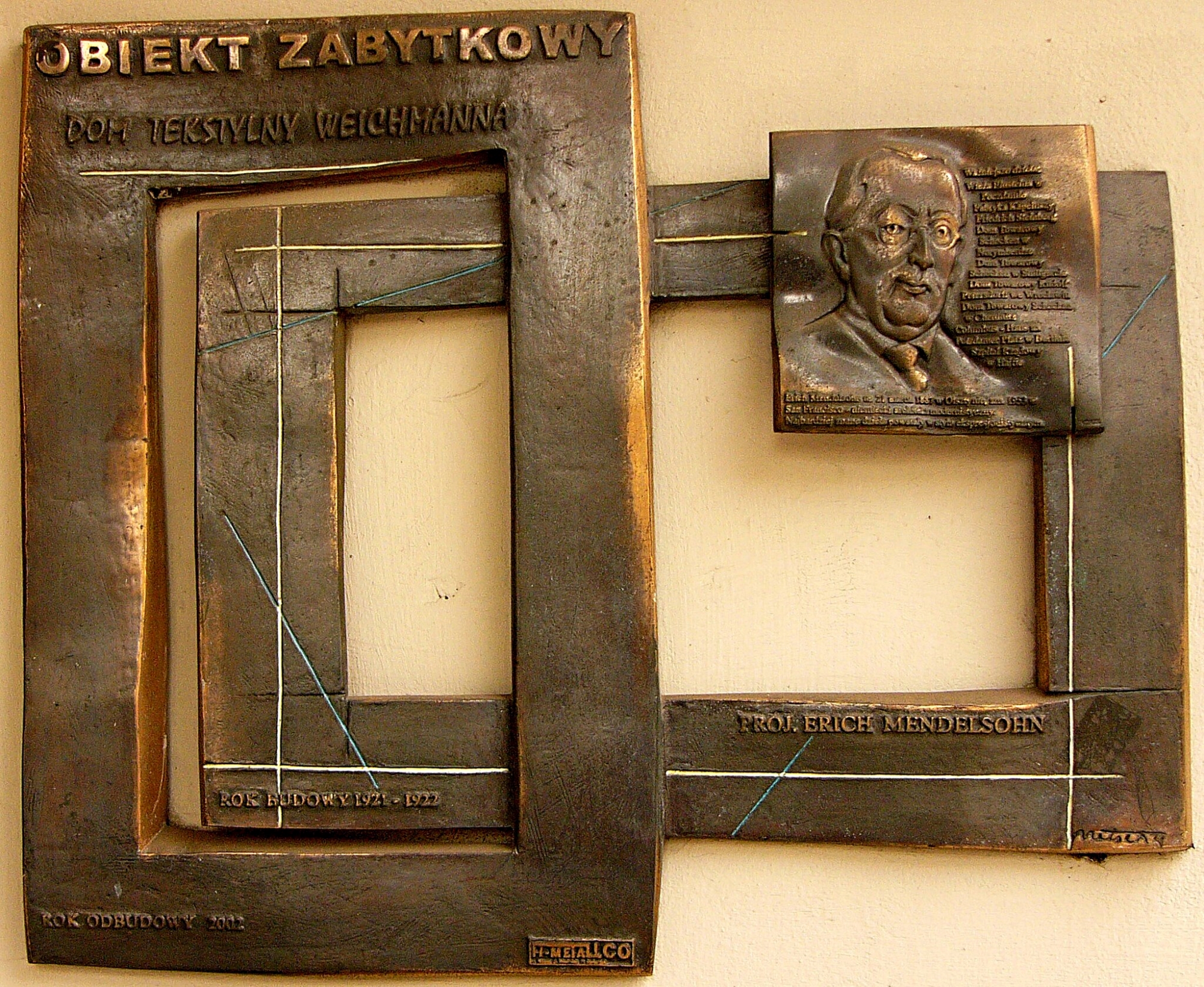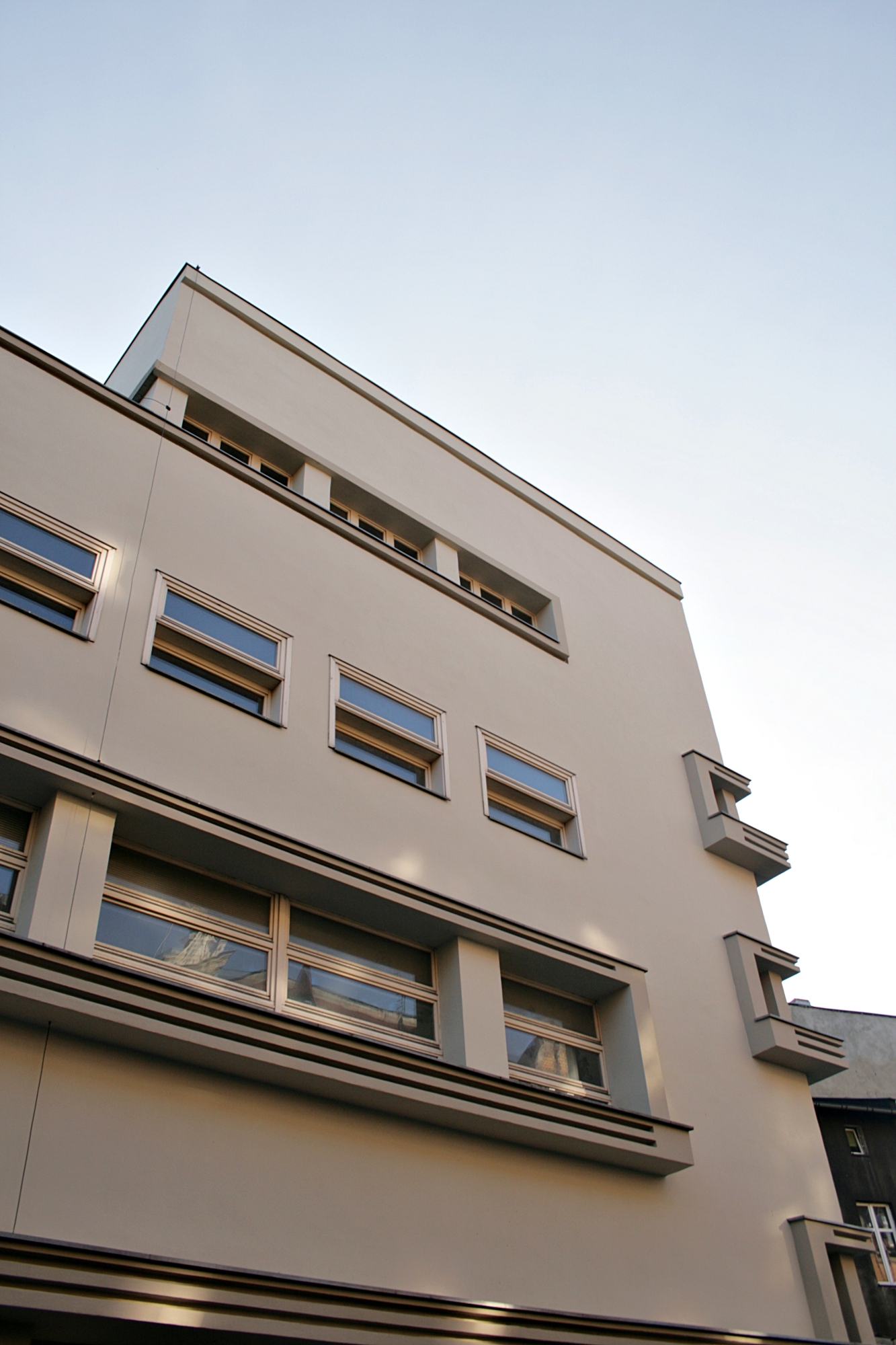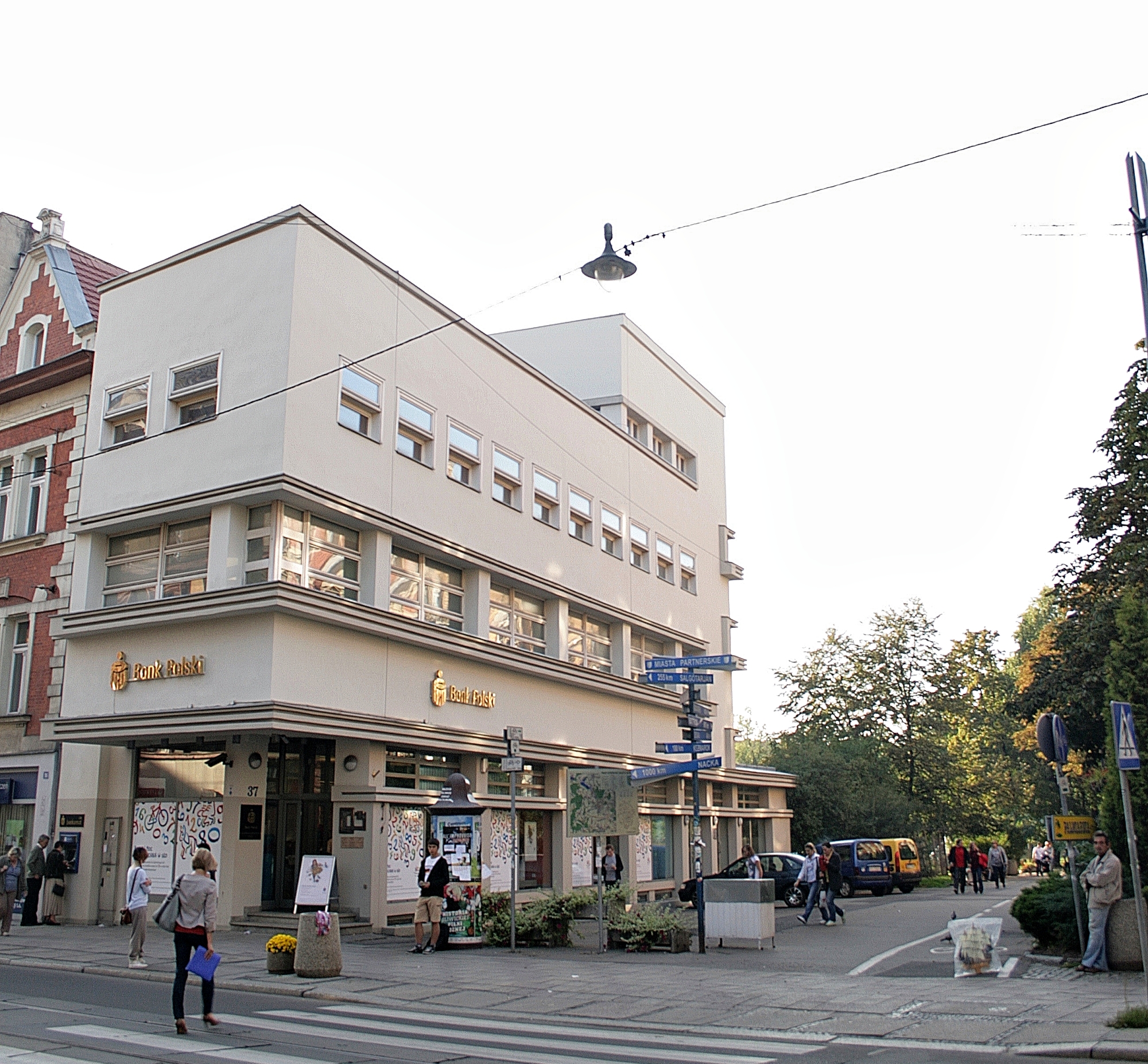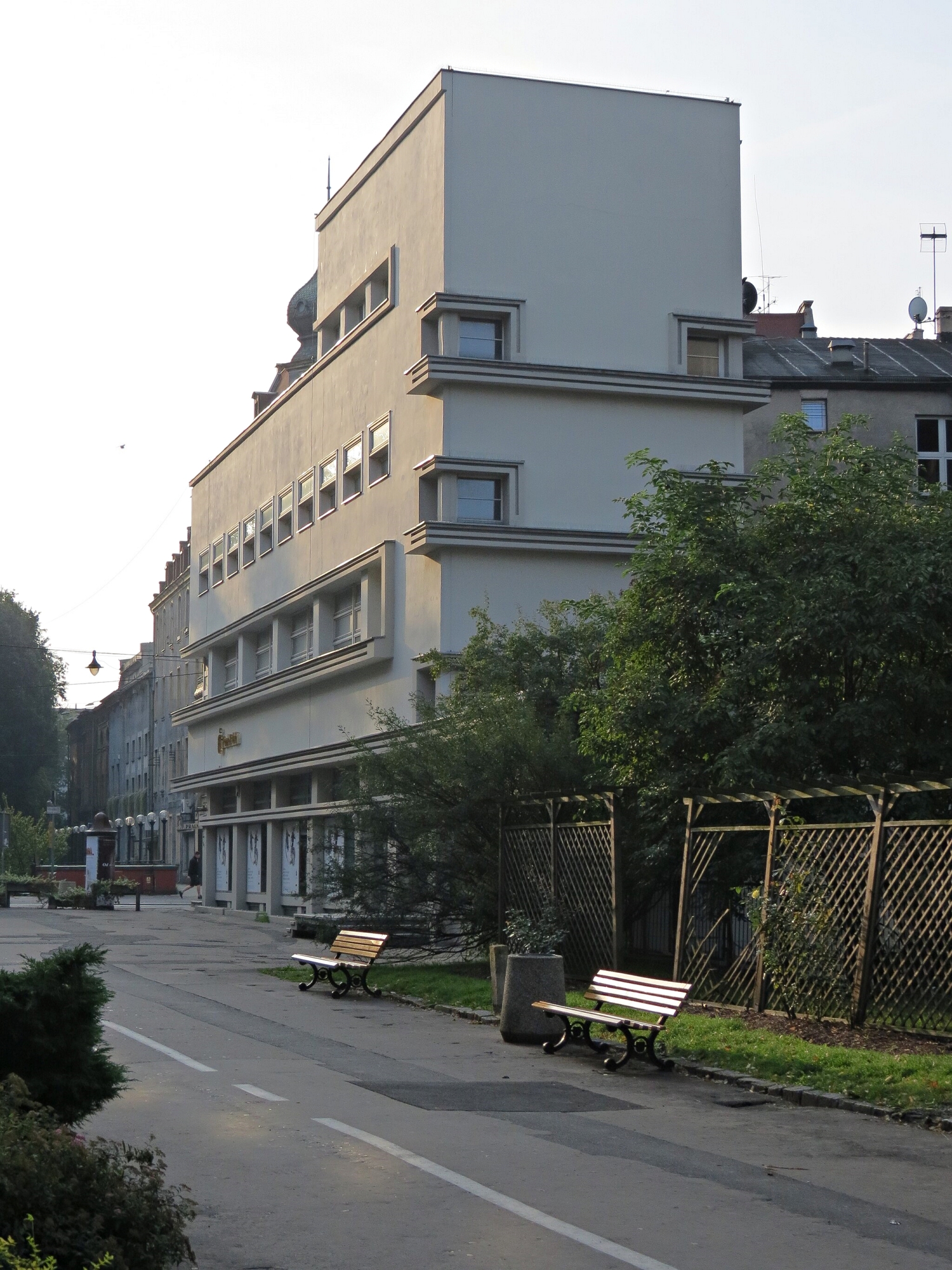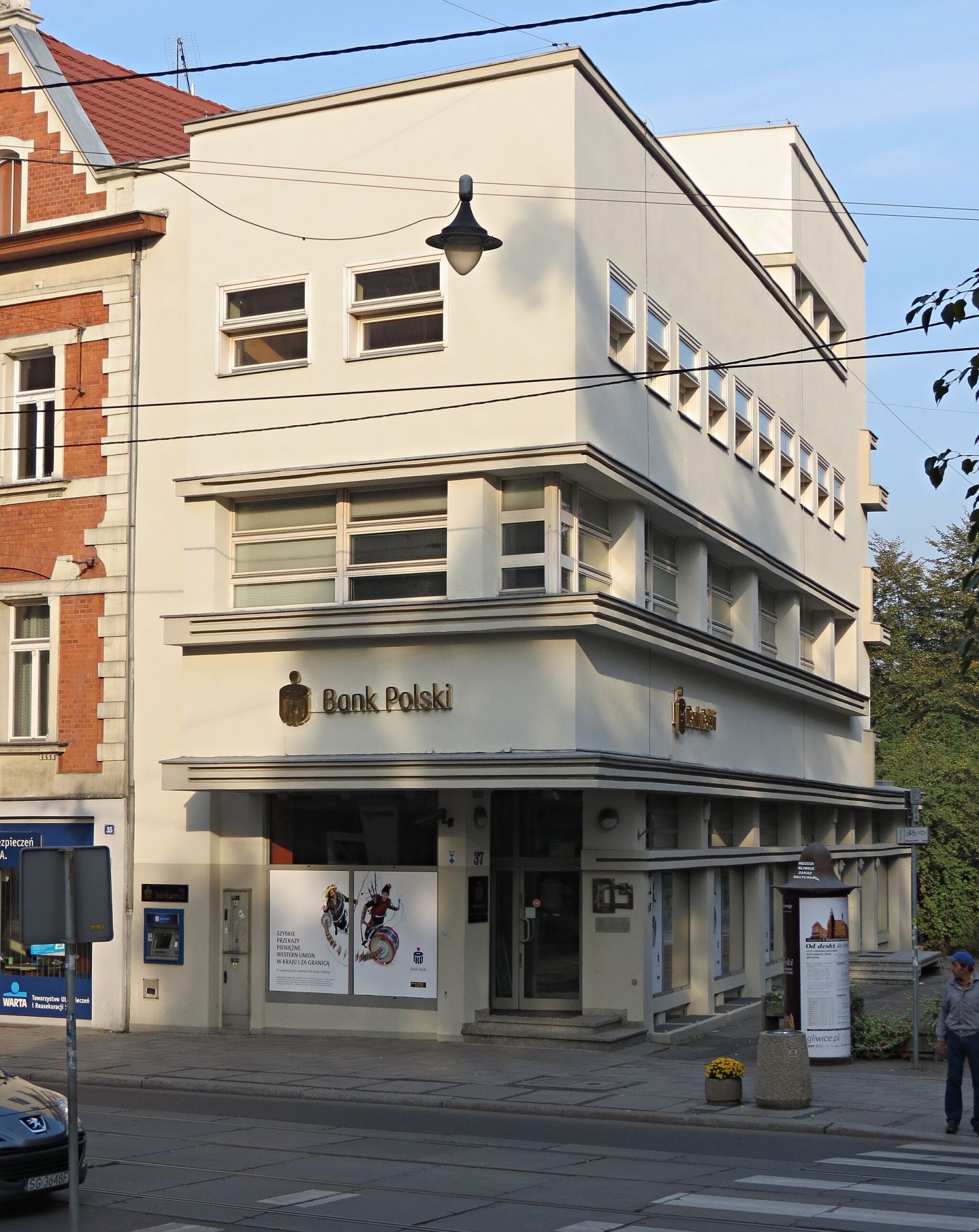The Weichmann Textile House (Seidenhaus Weichamann) is one of Upper Silesia’s most important objects of modernist architecture. It combines functionalist and expressionist elements. The iconic building was designed by Erich Mendelsohn in the 1920s and became the first of a group of the architect’s numerous works that had a significant influence on the shaping of the architecture of later department stores.
Erwin Weichmann’s Textile House was erected between 1921 and 1922 in Gliwice, surrounded by residential and commercial frontage from the turn of the 20th century, on the then prestigious, commercial Wilhelmstrasse (now Zwycięstwa Street), designed by the renowned German architect Erich Mendelsohn. The building was constructed to house a textile shop and other ancillary business premises.
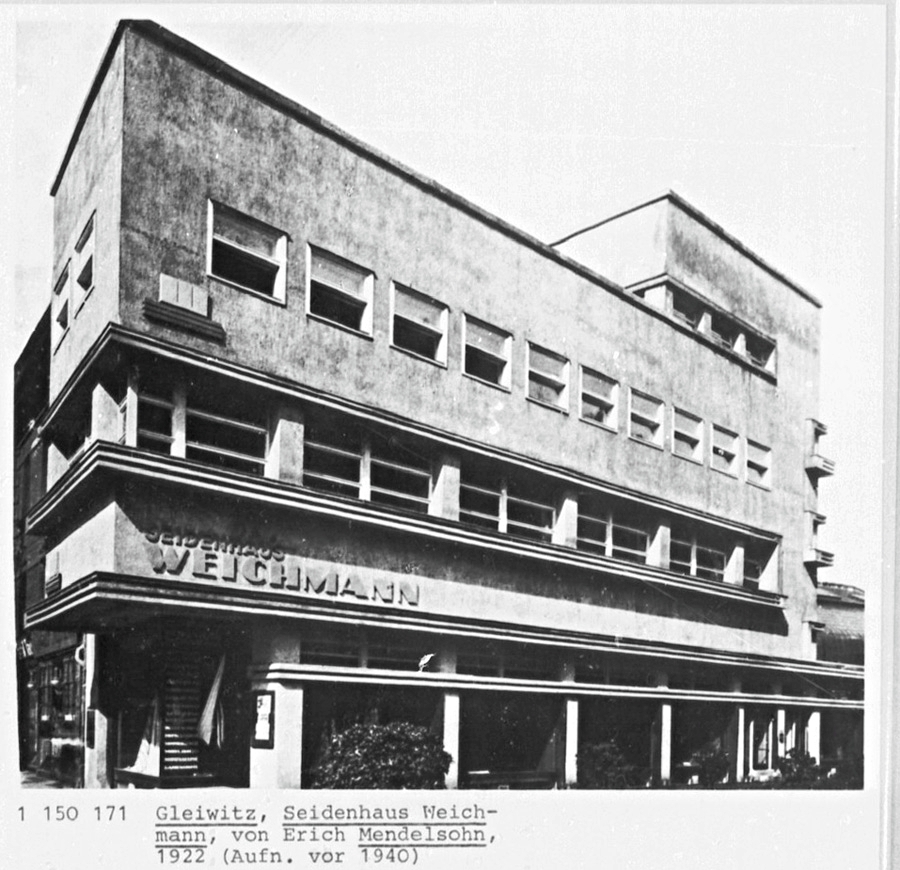
The three-storey edifice is an early example of a building with reinforced concrete construction supplemented with bricks. It combines expressionist and functionalist features, including the aesthetics of the Dutch De Stijl group. The building was constructed on an irregular plan, close to a rectangle. It has two floors and a small extension considered to be the third floor. It is covered with a flat roof. Its fragmented body is characterised by stepped heights, prominent cornices and strips of windows. The entire structure rests on rhythmically spaced pillars. It is clearly divided into a commercial section on the ground and first floors and a private section on the two upper floors.
The Weichmann textile house in 1927 and 2023. Source: Silesian Digital Library and Eugeniusz S./fotopolska.eu
The newly created building attracted considerable interest in architecture and art circles, serving as a showcase for the avant-garde in Europe and the starting point for the designs of many much larger, famous department stores in Germany at the time, including those in Stuttgart, Nuremberg, Breslau and Chemnitz. In 1932, the Weichmann family, faced with growing aggression against Jews, was forced to leave Gliwice and emigrated to the United States after selling the shop. After their departure, the property passed to Max Altgassen, who was killed during the bombing of Dresden in 1945.
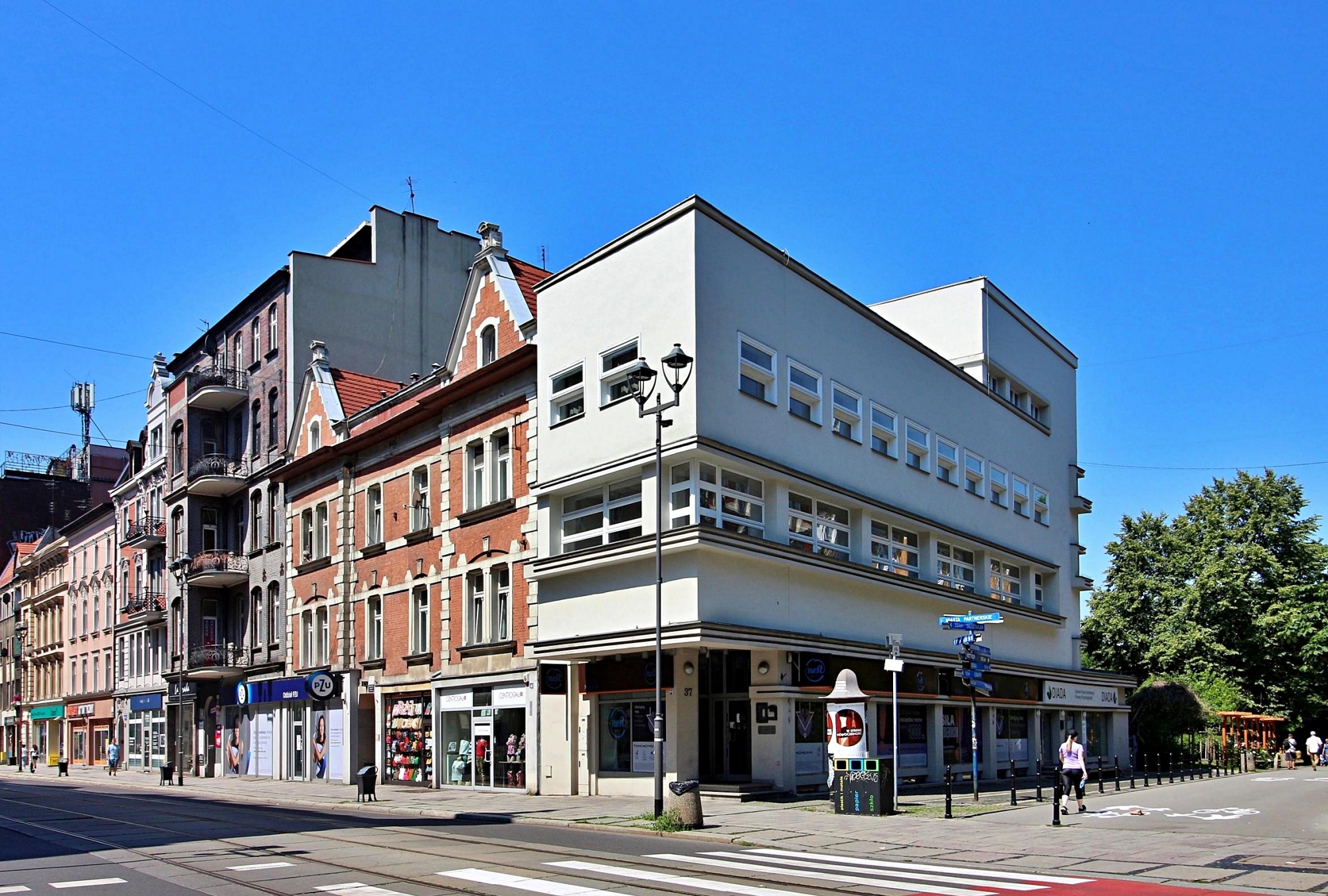
After the Second World War, the former textile house housed, among other things, a Soviet bookshop and other shops and service outlets, which destroyed its original design. Over the following decades, the building gradually fell into disrepair. The building was entered in the register of historical monuments on 27 September 1988 (Reg. No. A/1376/88W). In 2002, H-Metallco purchased the building from the city through a tender process. It was then renovated with a restoration of its former appearance. For this, the new owners received the honourable mention “Moderna 2005” from the architects of Silesia. In 2008, a commemorative plaque dedicated to Erich Mendelsohn and an information board were unveiled at the entrance. Today, the building is, among other things, the headquarters of a bank.
Source: zabytek.pl, gliwiczanie.pl, sztetl.org.pl
Read also: Modernism | Architecture in Poland | Monument | History | City




